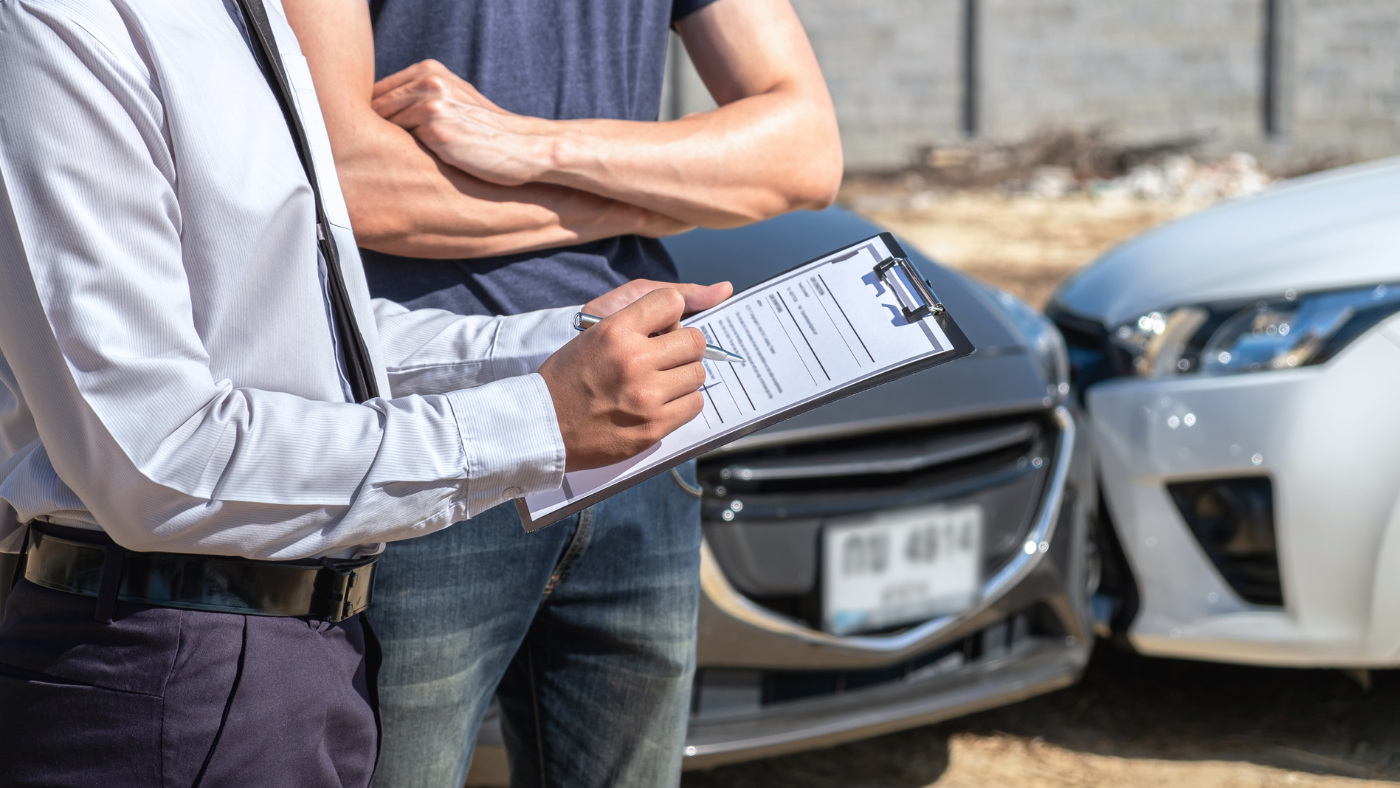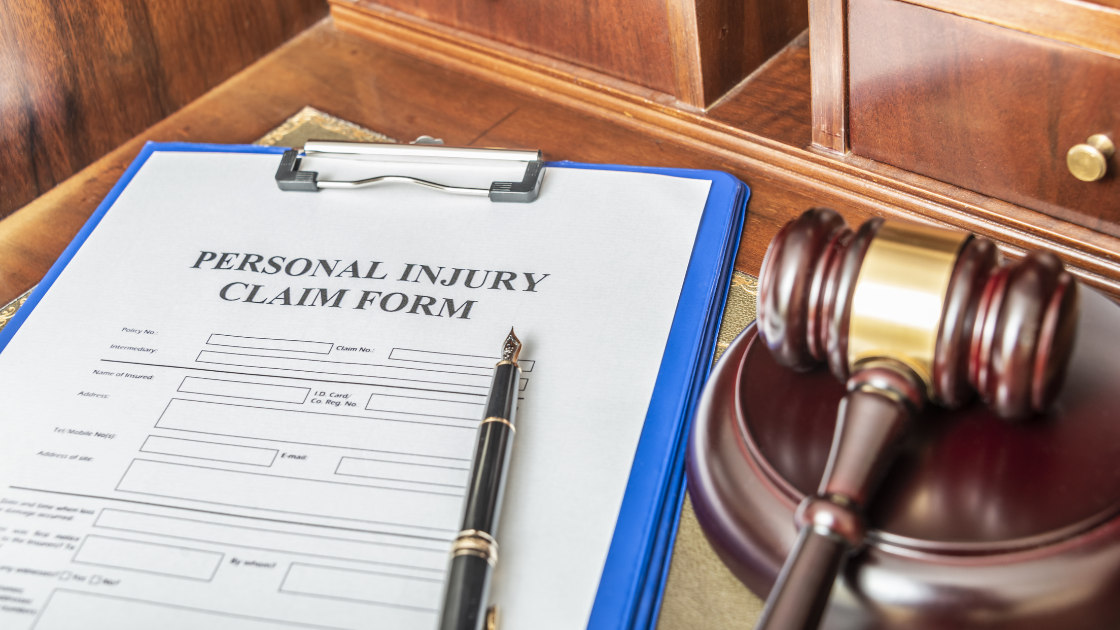What Does Negligence Mean In The Context Of A Car Accident Settlement?
Car accidents involving minors are emotionally distressing and can lead to complex legal battles. When an accident occurs, determining fault and knowing the average settlement for a child in a car accident becomes crucial in seeking justice and compensation for the injured minor and their family. But can you sue a minor for a car accident? Proving negligence, the critical element in any personal injury settlements for minors is an intricate process that requires careful examination of the accident’s circumstances.
The journey to proving negligence is multifaceted, from gathering evidence and analyzing the duty of care to demonstrating a breach and showing causation. The legal system recognizes that minors require special protection due to their vulnerability and limited decision-making ability. Consequently, the burden of proof may be adjusted to account for their age and circumstances.
It is essential to note that laws and legal procedures can vary depending on the jurisdiction, and seeking professional legal advice is strongly recommended when dealing with car accident cases involving minors. This guide serves as a general overview to provide a foundation of knowledge and promote a better understanding of the complex process.
Remember, the path to proving negligence may be challenging. However, with the appropriate knowledge and support, you can build a persuasive argument that safeguards the rights of minors and encourages the holding of those accountable for the harm they caused.
In car accident lawsuits, negligence refers to the failure of an individual to exercise reasonable care while driving, resulting in harm or injury to others. Negligence refers to the lack of action in a manner that aligns with what a reasonably cautious individual would do in comparable circumstances.
Types of Negligence in a car accident lawsuit
The Role Of Negligence In Determining Fault In A Car Accident Lawsuit
Negligence is crucial in determining an average settlement for a child in a car accident. The party who can prove that the other party was negligent and that their negligence caused the accident is more likely to succeed in their claim for damages. By establishing negligence, the injured party can hold the at-fault party accountable for their actions or omissions and recover compensation for medical expenses, property damage, pain and suffering, and other losses.
Proving negligence requires thoroughly investigating the accident and gathering evidence such as eyewitness testimonies, police reports, photographs, and expert opinions. In addition, it is essential to demonstrate that the at-fault party owed a duty of care, breached that duty, and directly caused the injuries and damages suffered by the minor.
Proving Negligence in a Car Accident Lawsuit Involving a Minor
Proving negligence in a minor car accident lawsuit requires a careful and comprehensive approach. While the general principles of establishing negligence apply, there are additional considerations given the age and vulnerability of the minor. The following key steps can guide you in the process of proving negligence:
Gathering Evidence
Accident Scene Documentation: Collect as much evidence as possible from the accident scene, including photographs, videos, and diagrams: document skid marks, road conditions, traffic signals, and any other relevant factors.
Eyewitness Testimonies: Identify and interview witnesses who observed the accident. Their accounts can provide critical details and support your case.
Police Reports: Obtain a copy of the official police report. It typically includes important information such as statements from the parties involved, observations of the officers, and any citations issued.
Medical Records: Secure medical records detailing the minor’s injuries. These records, including medical bills, will help establish a link between the accident and the resulting harm.
Establishing Duty of Care
Driver’s Duty of Care: Show that the defendant driver owed a duty of care to others on the road, including the minor. Every driver is responsible for operating their vehicle safely and adhering to traffic laws.
Special Duty of Care for Minors: The defendant driver should have taken extra precautions and exercised heightened vigilance, recognizing the special duty of care owed to minors due to their age and limited capacity to protect themselves. Whether a minor is a passenger in a car or on board a school bus, it is crucial for other drivers to be aware of their presence and take appropriate measures.
Demonstrating Breach of Duty:
Comparative Negligence: Depending on the jurisdiction, the minor’s actions or contributory negligence may be considered. However, the standard for comparative negligence is often lower for minors, considering their level of maturity and understanding.
Violations of Traffic Laws: Identify any traffic violations committed by the defendant driver, such as speeding, running a red light, or failing to yield. In a car accident case, these violations can help establish a breach of duty.
Proving Causation
Cause-in-Fact: Establish a direct link between the defendant’s breach of duty and the injuries suffered by the minor. Show that, “but for” the defendant’s negligence, the accident would not have occurred.
Proximate Cause: Demonstrate that the injuries sustained by the minor were reasonably foreseeable consequences of the defendant’s negligent actions. This helps establish a proximate cause and reinforces the connection between negligence and harm.
Documenting Damages
Medical Records and Bills: Gather all medical records, bills, and related expenses incurred due to the accident. This includes hospitalization, surgeries, medication, rehabilitation, therapy, and future medical needs.
Pain and Suffering: Document the physical and emotional distress experienced by the minor due to the accident. This may involve medical expert testimony and psychological evaluations.
Impact on the Future: Assess the long-term consequences of the injuries on the minor’s life, including potential limitations, disabilities, or implications for education and future career prospects.
Duty and Care
In an average settlement for a child in a car accident, determining the duty of care is crucial in proving negligence. Duty of care refers to the legal obligation of individuals to exercise reasonable care to prevent harm to others. However, the specific duty of care owed in the context of a car accident damages can vary depending on the circumstances and the relationship between the parties involved.
Regarding minors, courts often recognize that they require special protection due to their vulnerability and limited capacity to protect themselves. As a result, the duty of care owed to a minor may be higher than that owed to an adult. Courts consider the minor’s age, maturity, and experience when determining the duty of care.
Breach of Duty of Care
Once the duty of care has been established, the next step in proving negligence is demonstrating a breach of that duty. Breach of duty occurs when a person fails to fulfill their duty of care through actions or omissions. For example, in a car accident involving a minor, it means showing that the defendant driver failed to act as a reasonably prudent person would have under similar circumstances, thereby breaching their duty of care.
To establish a breach of duty, it is necessary to present evidence highlighting the defendant’s actions or omissions that deviated from the expected standard of care. This can include proof of reckless driving, distracted driving, violating traffic laws, driving under the influence of alcohol or drugs, or any other behavior that directly contributed to the accident and subsequent injuries to the minor.
Causation
Causation is critical in proving negligence in a minor car accident lawsuit. It demonstrates a direct link between the defendant’s breach of duty and the injuries suffered by the child. There are two types of causation to establish:
Cause-in-Fact: This type of causation, often referred to as “but for” causation, requires showing that the accident and the resulting injuries would not have occurred “but for” the defendant’s breach of duty. In other words, it establishes that the defendant’s actions or omissions were the actual cause of the accident and the harm suffered by the minor.
Proximate Cause: Proximate cause focuses on whether the harm suffered by the minor was a reasonably foreseeable consequence of the defendant’s breach of duty. It assesses whether the defendant’s actions or omissions were directly related to the injuries and if it was within the scope of the risks that could be anticipated.
Damages
In a car accident lawsuit involving a minor, damages refer to the physical, emotional, and financial harm suffered by the child due to the accident. To establish damages, it is essential to document and present evidence of the injuries sustained by the minor, including medical records, bills, and any related expenses.
Damages can include medical expenses, rehabilitation costs, pain and suffering, emotional distress, loss of enjoyment of life, and any other losses that result from the accident. Therefore, it is crucial to accurately quantify and demonstrate the impact of the injuries on the minor’s present and future well-being.
What Is The Average Car Accident Claim For A Child In A Car Accident?
Determining the average settlement for a minor child involved in a car accident is challenging because each case is unique and influenced by various factors. The settlement amount depends on several variables, including the severity of the child’s injuries, the long-term impact on their life, medical expenses, ongoing care and rehabilitation needs, emotional distress, and more.
It’s important to note that personal injury settlements for child car crash cases are typically handled differently than adult ones. Since minors cannot legally represent themselves and the child’s mental health is also prioritized, the court typically appoints a guardian or a parent to act as the child’s legal representative.
When calculating fair compensation for a child involved in a car accident, the following factors are often taken into consideration:
Medical Expenses: This includes immediate medical care, hospitalization, surgeries, medication, ongoing treatments, therapy, and any past and future pain or medical expenses related to the injuries.
Rehabilitation and Therapy: If the child requires rehabilitation or therapy to recover from their injuries, the cost of such treatments will be considered.
Future Care Needs: If the child’s injuries result in long-term or permanent disability, the anticipated costs of future care, including nursing care, assistive devices, or modifications to the home, may be factored into the settlement.
Pain and Suffering: Pain and suffering affect children in many ways. Compensation may be awarded to account for the physical and emotional pain and suffering endured by the child due to the accident.
Emotional Distress: If the child experiences emotional trauma or develops mental health issues due to the accident, compensation may be provided for therapy or counseling expenses.
Loss of Enjoyment: If the child’s injuries restrict their ability to participate in activities they previously enjoyed, compensation may be awarded.
Loss of Future Earnings: In cases where the child victim suffers permanent disabilities that affect their ability to work, compensation may be provided for the loss of future earning capacity.
Legal Fees: The settlement may also cover the legal fees incurred during the process.
Car Accidents Factors That Influence the Value of Your Case
Several factors can influence the value of a case involving a minor in a car accident. It’s essential to consider these factors when determining the potential compensation:
Severity of Suffered Injuries: The extent and severity of the child’s injuries play a significant role in calculating the case’s value. Serious injuries that require extensive medical treatment and have long-lasting effects tend to result in higher compensation.
Medical Expenses: The medical expenses incurred due to the accident, including emergency care, hospitalization, surgeries, medications, rehabilitation, therapy, and future medical needs, are considered when evaluating the case’s value.
Long-Term Impact: If the child’s physical injuries result in long-term or permanent disability, it is vital to seek compensation of a higher amount to account for ongoing care needs, assistive devices, and modifications to accommodate the child’s condition.
Age of the Child Injured: The child’s age at the time of the accident can influence the case’s value. Furthermore, the child’s recovery period varies. Younger children may have a longer life expectancy with potential long-term consequences, whereas older children may have a clearer understanding of the impact of their injuries.
Emotional Distress: When calculating a child’s pain and suffering settlement, emotional trauma experienced by the child as a result of the accident can be considered. This includes any psychological or emotional distress, anxiety, depression, future mental anguish, or post-traumatic stress disorder (PTSD) the child suffers.
Impact on Education and Future Earnings: If the child’s injuries hinder their ability to perform well in school or limit their future earning potential, these factors may be considered when determining the compensation amount.
Insurance Coverage: The insurance policy limits of the at-fault party involved in the accident can affect the potential compensation. If the responsible party has limited insurance coverage, it may impact the overall amount that can be recovered.
Comparative Negligence: In cases where the child’s actions contributed to the accident, the concept of comparative negligence comes into play. If the child is found partially at fault, the overall compensation amount can be affected.
Legal Representation: The experience and knowledge of the legal team from a personal injury law firm representing the child can influence the case outcome. Skilled attorneys can effectively negotiate with insurance companies and advocate for fair compensation.
The Role of Your Car Accident Attorney in Proving Negligence
When proving negligence involving a minor driver in a car accident, a car accident lawyer plays a crucial role in gathering evidence, establishing liability, and building a strong case. Here are some ways in which a car accident lawyer can help:
Investigation: Your lawyer will thoroughly investigate the accident to gather evidence. They may review the accident scene, take photographs, obtain surveillance footage, and collect relevant evidence such as police reports, witness statements, and medical records.
Proving Breach of Duty: Your lawyer will work to establish that the other driver breached their duty of care. They will gather evidence, such as witness testimonies, expert opinions, and any available surveillance footage, to show that the other driver acted negligently or recklessly, leading to the accident.
Causation: Your lawyer will establish a causal connection between the other driver’s breach of duty and the injuries sustained by the minor driver. They will gather medical records and expert opinions to demonstrate that the injuries directly resulted from the accident.
Comparative Negligence Defense: If there are allegations of comparative negligence where the minor driver may be partially at fault, your lawyer will work to refute or minimize those claims. They will present evidence that the other driver’s negligence was the primary cause of the accident and the injuries suffered by the minor driver.
Expert Witnesses: Your lawyer may engage expert witnesses in complex cases or cases involving specific technical aspects, your lawyer may engage expert witnesses. To support your claim, they can provide knowledge and opinions on accident reconstruction, vehicle dynamics, human factors, or any other relevant field to support your case.
Negotiation and Settlement: Your lawyer will handle all communication and negotiation with the other party’s insurance company to pursue a fair settlement on behalf of the minor driver. They will advocate for the best possible recompensation considering the injuries, medical expenses, and other damages suffered by the minor driver. They will also guide you on how to mentally recover from a car accident.
Trial Representation: If a fair settlement cannot be reached through negotiation, your lawyer will prepare your case for trial and provide representation in court. They will present the evidence, argue your claim, and work to secure a favorable verdict and seek compensation for the minor driver.
Can I gain access to my child’s settlement money?
The process for accessing a child’s settlement money usually involves court approval. The court will appoint a guardian or trustee to manage the funds in the child’s best interest. The guardian or trustee is responsible for making financial decisions and ensuring that the funds are used appropriately for the child’s benefit, such as for medical expenses, education, or other necessary needs.
The exact rules and procedures for accessing a child’s settlement money can vary depending on the jurisdiction and the case’s specific circumstances. Therefore, avail of the free consultation of a qualified attorney with experience in personal injury and settlement matters to understand the laws and procedures applicable to your situation.
Conclusion
In conclusion, determining the average settlement for a child involved in a car accident is a complex process that depends on various factors. Each case is unique, considering the severity of the child’s injuries, long-term impact, medical expenses, ongoing care needs, emotional distress, and other relevant factors.
It is crucial to consult with an experienced personal injury attorney with experience in a minor child involved in car accident case to assess the case’s specific details and provide guidance on fair compensation. While it is challenging to determine an average settlement amount due to the unique nature of each case, working with legal professionals can help ensure that the child’s rights and best interests are protected throughout the process.










